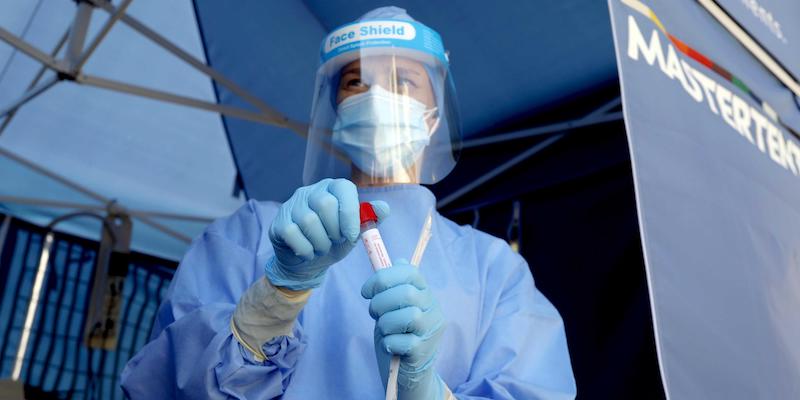
[ad_1]
The Scientific Technical Committee (CTS) recommended that the government reduce the isolation time to 10 days and use only one swab to determine the overcoming of a coronavirus infection, thus canceling the need for a second at least 24 hours after the first. This solution, which must be adopted at the same time as the regulation of the next government decree, should reduce the workload of laboratories that analyze swabs (molecular tests), allowing a greater capacity to diagnose new cases.
Until the advice of the CST, Italy was one of the few countries that still required that there be two negative swabs, performed at least one day apart, before declaring the end of isolation for a person who tested positive for coronavirus. The double test allowed to reduce the risk of interrupting the isolation in the case of a false negative, but over time it had caused several distortions, because in some people the coronavirus is detected by the molecular test even for weeks, and even if they are no longer contagious.
The new rules proposed by the CTS affect both individuals who develop symptoms and those who do not become ill and are therefore “asymptomatic”.
Positive case with symptoms
The diagnosis of COVID-19 must be confirmed by a molecular test (swab). If successful, the affected person must remain in isolation for at least 10 days, showing in the last 3 that they no longer present symptoms. You must then undergo a single swab to certify negativization at the end of the isolation period.
Asymptomatic positive case
The diagnosis of COVID-19 is confirmed by swab. If so, the isolation should last 10 days and includes a swab at the end to check for negativization.
Asymptomatic positive case that does not become negative
If an asymptomatic case tests positive on the swab performed on the tenth day of isolation, it is expected that they remain in that state and take another swab on the 17th. At the moment, there have been no cases in which the coronavirus still manages to replicate after such a long period of time.
Close contacts
Close contacts must remain in fiduciary isolation for 10 days and must take a swab for molecular testing or rapid antigen testing.
What the WHO says
The new regulation recommended by the CTS takes up the guidelines that the World Health Organization had issued at the end of last May, modifying its previous recommendations. In fact, reports from several countries showed that the double negative swab rule greatly influenced the ability of laboratories to diagnose new cases, flooding the system.
A coronavirus infection (SARS-CoV-2) is confirmed by the presence of its genetic material (RNA) in a sample of mucus and saliva, taken from the positive suspect through a swab that is inserted deep into the nasal septum. However, a test with a positive result and, therefore, with the presence of viral RNA, does not imply that the individual is contagious and that they can transmit the coronavirus to other people.
There are several factors that affect the risk of transmission: from the ability of the virus to replicate again in the infected individual, to the presence of symptoms that can contribute to the spread of infected saliva droplets, such as a persistent cough. Research carried out so far has shown that on average a positive person begins to produce neutralizing antibodies between the fifth and tenth day from the moment of infection. The presence of these antibodies further reduces the risk of virus transmission.
In people who become ill with COVID-19, the genetic material of the coronavirus can be detected with a molecular test even after the end of the symptoms, but according to the research carried out so far, the concentration and quality are such that the coronavirus can not keep repeating. The test is quite sensitive and indicates the presence of coronavirus genetic material, which the body has not yet completely removed.
A coronavirus infection told with graphics
[ad_2]